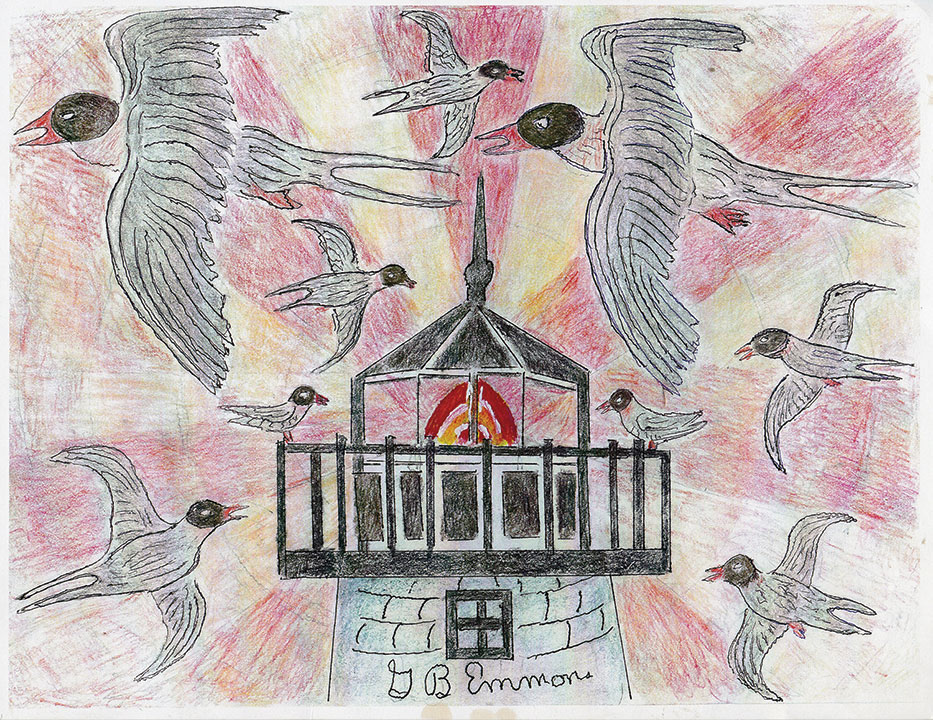The Bird Island Lighthouse is historic because long ago it guided shipping on a busy whaling and manufacturing seaport. It was built in 1819 with a revolving beacon and added a magnificent magnifying lens in 1856.
The lighthouse remained in valuable service until the devastating hurricane of 1938 that destroyed all the other buildings except the lighthouse itself. However, by itself it was deactivated in the following year (1939) until 1997 and reverted to operation by the town of Marion to be maintained as a bird sanctuary and a private aid to navigation.
The island where the lighthouse still stands is about 1.5 low-level acres of eroded glacial till about a half-mile out to sea from Butler’s Point. It remains protected by a low seawall against wave action and hurricane damage. However, it remains as a valuable landmark beacon for migrating terns in Spring, indicating that just ahead sits a convenient nesting topography and annually gathers 3,500 pairs of Roseate and Common Terns, which adds up to almost 25 percent of the North American population of both species.
The Roseate Tern is among the most beautiful and elegant species because of a flowing white tail punctuated by short wing action, as illustrated congregating past the magnetic attraction of the lighthouse beacon. Their bill is long and slim and sharply pointed and presents a magnificent moving masterpiece as well as a vocal orchestration through the air for local bird watchers.
To show their appreciation and interest, a group of Marion citizens passed a municipal environmental action program to donate and install several hundred wooden nesting boxes to support and stimulate the reproduction of the annual passing review that they valued.
The nesting boxes each protected tern on four sides, top to bottom, from predators stealing eggs such as other birds and mammals like rats, snakes, ants and land crabs. When losing eggs or chicks, the terns will try to replace them, but this remains one of the natural hazards in recent years to account for their endangered-species classification, so the concept of nesting boxes was right on track for real conservation by citizens of Marion.
This action has reestablished the Bird Island Lighthouse to a rightful monument and historic sentinel of environmental awareness to be enlightened for future generations of possible remedial correction to natural disasters that suddenly seem to appear over the horizons of our natural world.
By George B. Emmons
